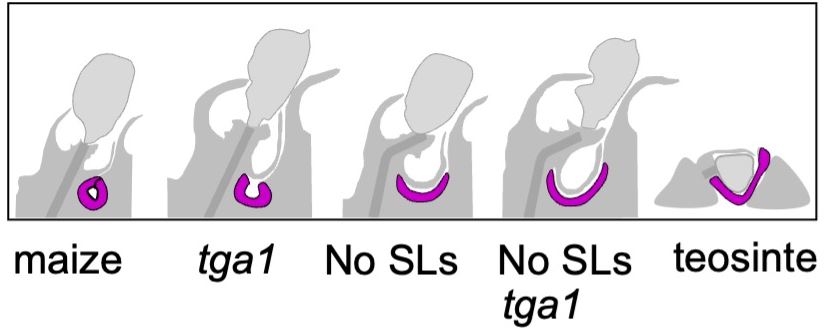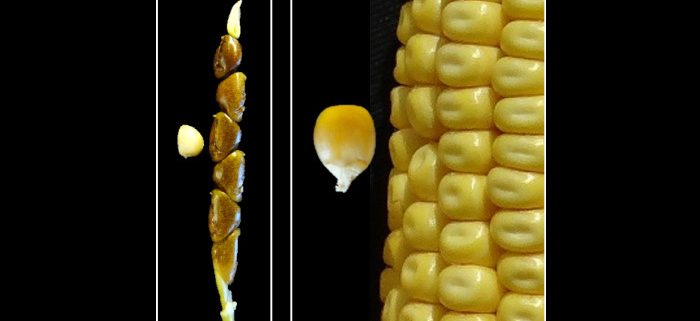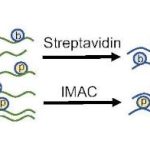The Plant Cell in a Nutshell: Strigolactones Shaped Ear Evolution
Gou et al. explore how strigolactone hormones affected the evolution of the maize ear.
By Jiahn-Chou Guan and Karen E. Koch
Background: The prehistoric ancestor of modern maize (Zea mays) is unrecognizable, lacks a cob, and protects each of its tiny kernels inside an acorn-like shell. Evolution of the maize ear during domestication transformed these hard coverings to cob tissue, which not only freed kernels to become the largest known grains, but also helped convert spindly stems to the most massive, seed-bearing surfaces of any cereal crop. Only a small fraction of this pivotal conversion is currently understood. We knew from our previous work on overall plant architecture that strigolactone hormones (SLs) could be involved.
Question: Could SLs be among the missing factors in evolution of the maize ear from its wild ancestor, teosinte? We hypothesized that SLs could restructure kernel-bearing surfaces of cobs, increase seed size, and coordinate these changes. We also proposed that SLs could regulate a known domestication gene as well as act alone.
 Findings: A rare combination of domestication features emerged in maize mutants unable to form or sense SLs. Kernels were small, cobs primitive, and seed-bearing cupules larger. Also, when SL-deficient mutants were combined with an ancestral form of the known domestication gene, Tga1 (Teosinte glume architecture 1), ears and kernels showed the most primitive, teosinte-like features yet observed. In addition, without SLs coordinating development, rigid seed-bearing cupules often ruptured growing kernels. Finally, analysis of underlying mechanisms indicated that SLs could act alone as well as regulate Tga1 by sequestering its protein. Evidence included RNA-seq expression analysis, protein-protein interactions, and additional maize genetics.
Findings: A rare combination of domestication features emerged in maize mutants unable to form or sense SLs. Kernels were small, cobs primitive, and seed-bearing cupules larger. Also, when SL-deficient mutants were combined with an ancestral form of the known domestication gene, Tga1 (Teosinte glume architecture 1), ears and kernels showed the most primitive, teosinte-like features yet observed. In addition, without SLs coordinating development, rigid seed-bearing cupules often ruptured growing kernels. Finally, analysis of underlying mechanisms indicated that SLs could act alone as well as regulate Tga1 by sequestering its protein. Evidence included RNA-seq expression analysis, protein-protein interactions, and additional maize genetics.
Next steps: We now will intensify our focus on identifying genetic modifiers and other means of modulating SL activity in maize. The results presented here show that impacts could coordinate ear and kernel features in addition to known roles of SLs in maize architecture, mycorrhizal symbioses, and vulnerability to devastation by witchweed (Striga) in Africa.
Reference:
Jiahn-Chou Guan, Changsheng Li, Sherry Flint-Garcia, Masaharu Suzuki, Shan Wu, Jonathan W Saunders, Lemeng Dong, Harro J Bouwmeester, Donald R McCarty, and Karen E Koch (2023) Maize domestication phenotypes reveal strigolactone networks coordinating grain size evolution with kernel-bearing cupule architecture. https://doi.org/10.1093/plcell/koac370




